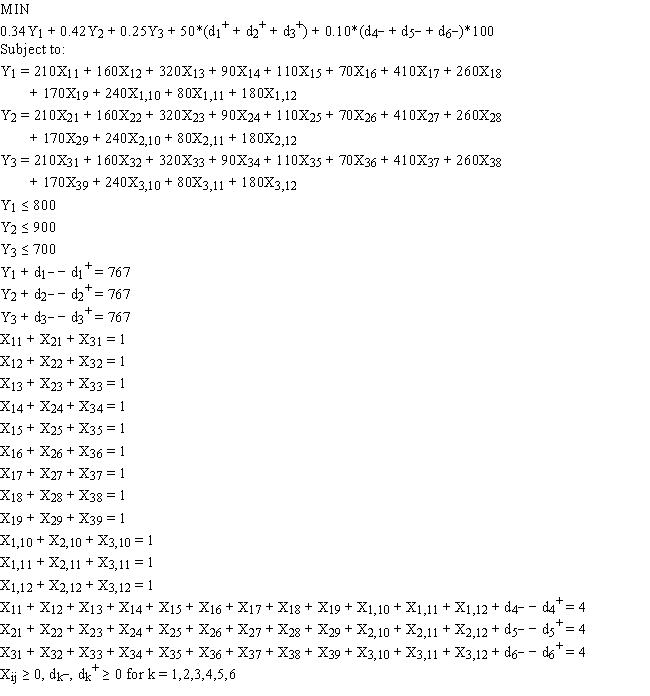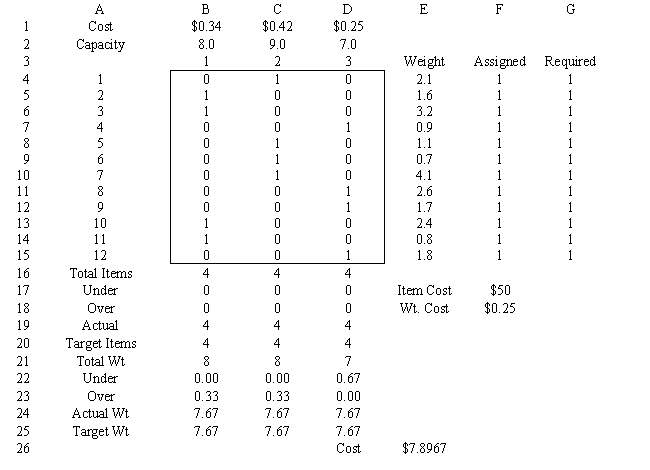Exhibit 7.4
The following questions are based on the problem below.
Robert Gardner runs a small, local-only delivery service. His fleet consists of three smaller panel trucks. He recently accepted a contract to deliver 12 shipping boxes of goods for delivery to 12 different customers. The box weights are: 210, 160, 320, 90, 110, 70, 410, 260, 170, 240, 80 and 180 for boxes 1 through 12, respectively. Since each truck differs each truck has different load capacities as given below:  Robert would like each truck equally loaded, both in terms of number of boxes and in terms of total weight, while minimizing his shipping costs. Assume a cost of $50 per item for trucks carrying extra boxes and $0.10 per pound cost for trucks carrying less weight.
Robert would like each truck equally loaded, both in terms of number of boxes and in terms of total weight, while minimizing his shipping costs. Assume a cost of $50 per item for trucks carrying extra boxes and $0.10 per pound cost for trucks carrying less weight.
The following integer goal programming formulation applies to his problem.
Y1 = weight loaded in truck 1; Y2 = weight loaded in truck 2; Y3 = weight loaded in truck 3;
Xi,j = 0 if truck i not loaded with box j; 1 if truck i loaded with box j.  Given the following spreadsheet solution of this integer goal programming formulation, answer the following questions.
Given the following spreadsheet solution of this integer goal programming formulation, answer the following questions. 
-Refer to Exhibit 7.4. The solution indicates Truck 3 is under the target weight by 67 pounds. What if anything can be done to this model to provide a solution in which Truck 3 is closer to the target weight?
Definitions:
Managerial Accounting Reports
Financial documents that provide detailed financial and operational information tailored to the needs of a company's management for decision making.
Relevance
The quality of information that makes it significant and useful for decision-making purposes.
Chief Management Accountant
A senior-level executive responsible for overseeing a company's management accounting, providing financial insights and strategies for decision-making.
Controller
A senior financial officer in a company responsible for overseeing accounting and financial reporting.
Q1: The concept behind neural networks is to<br>A)identify
Q5: Refer to Exhibit 11.1.If predicting the cars
Q19: Binary variables are:<br>A)a subset of integer variables<br>B)continuous
Q33: What function should be used for generating
Q33: If there is no way to simultaneously
Q41: Refer to Exhibit 11.10.What is the Input
Q41: A situation when decision quality is good
Q62: State Farm Supply has just received
Q65: Solve the following LP problem graphically using
Q75: Refer to Exhibit 11.7.What are predicted sales